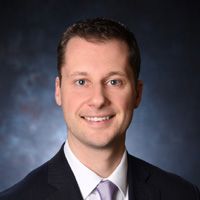The Bucket Approach for Investing in Your 50s
Pouring your savings into three different buckets is a handy way to get ready for retirement. Here's what goes into each of your buckets.


Planning for retirement is not as simple as it was for your parents. Retirement income used to be a three-legged stool: pension, Social Security income and savings. Recently, companies have been doing away with pension plans and Social Security does not cover nearly enough of an individual's retirement income needs.
Most savers are in their peak savings ability in their 50s, and it’s important time to build your buckets efficiently. To better balance your retirement savings, you should diversify your tax positioning. This can be done by contributing to three “buckets”: taxable, IRA (pre-tax) and Roth (post-tax).
The Taxable Bucket
Any money that is in your taxable bucket reaches your account after the IRS has already taken its cut. This money is like what you’d see on your paycheck after taxes have been taken out. This is the money that goes into your checking account via direct deposit on paydays. So, clearly, this bucket has no limit on what you can add to it. There are no age restrictions for adding money to this bucket, making it the most flexible of the three. Any amount of money you invest here is called your “basis” or “cost basis.” Examples of investments for your taxable bucket include CDs, savings accounts, stocks and mutual funds.
From just $107.88 $24.99 for Kiplinger Personal Finance
Become a smarter, better informed investor. Subscribe from just $107.88 $24.99, plus get up to 4 Special Issues

Sign up for Kiplinger’s Free Newsletters
Profit and prosper with the best of expert advice on investing, taxes, retirement, personal finance and more - straight to your e-mail.
Profit and prosper with the best of expert advice - straight to your e-mail.
IRA (Pre-Tax) Bucket
The second bucket is the Individual Retirement Account, aka IRA. This money can be from a traditional IRA or from funds rolled over from other retirement accounts, such as 401(k)s from former employers. All the money in this bucket is typically contributed on a pre-tax basis, meaning you earned the money and it was invested before taxes were taken from it. Therefore, you will have to pay taxes on it upon taking any distributions.
The limitations on adding money to this bucket change annually. If you want to add money and deduct the investment from your taxable income, your income must be below a certain threshold. The bulk of this money is built from contributing to a retirement plan through your employer in the form of a 401(k), 403(b) or TSP savings plans. As you hit your 50s and approach retirement, you are allowed to add more to your retirement account, known as a “catch up” period.
Typically, people have the majority, if not all, of their retirement savings in this bucket by the time they are in their 50s. The money you take out of this bucket, come retirement, is fully taxable at ordinary income rates.
The Roth IRA Bucket
The third, final and most complex of the three is the Roth IRA bucket. A Roth IRA is a special retirement account that you fund with any earned income you have remaining post-tax. Contributions to this account cannot be deducted on your income taxes. But unlike traditional IRAs, all withdrawals from this bucket — including any investment gains — during retirement will be tax free if you follow the IRS rules.
Another option for high-income earners who aren’t allowed to contribute to a Roth IRA is a Roth 401(k). Not all employers offer Roth 401(k)s, but they are becoming increasingly popular since they do away with income phase-outs for contributions.
This bucket is the hardest to build up due to income restrictions or employer availability. There are backdoor ways for such people to contribute. The availability and income restrictions typically cause this to be the smallest of the three buckets.
Which Bucket is Best?
The best bucket will depend on your specific financial situation. The pre-tax IRA bucket tends to look the most appealing. You save on taxes when you are working during your higher income tax years and spend when you are in a lower tax bracket during retirement. Although, what if you are not in a lower tax bracket during retirement? Tax rates change all the time and it’s not a given that your bracket will be lower in the future.
The Roth and taxable buckets are good because you can take money out tax free (with a Roth) or taxed less (taxable bucket), at capital gains rates with the sale of stocks or mutual funds. This assumes that the IRS doesn’t change its rules, which it has been known to do. Life is full of unknowns, and it’s important to remember that the saving rules for retirement are fluid.
The answer is the best bucket for taking income in retirement will likely change over time. As tax rules change, and your personal situation evolves, the best bucket for distributions will change, too.
Retirement savers put much time and effort into diversifying investments within their savings, so that they are not putting all their eggs in one basket. They own a mix of stocks, bonds, mutual funds and so on. Shouldn’t these investors also consider putting their different eggs in different tax baskets (buckets) as well? Not just in the IRA/401(k)/403b savings vehicles?
Retirement planning is always changing, so it’s important to stay on top of new saving mechanisms that can make the transition the best for you and your finances. Saving for your retirement isn’t easy but with careful planning, it can be accomplished and reduce your worries and stress at a time when you should be comfortably relaxing after decades of hard work.
Securities offered through LPL Financial, Member FINRA/SIPC. Investment advice offered through SFG Wealth Management, a registered investment adviser. SFG Wealth Management and Synergy Financial Group are separate entities from LPL Financial.
The opinions voiced in this material are for general information only and are not intended to provide specific advice or recommendations for any individual. This information is not intended to be a substitute for specific individualized tax advice. We suggest that you discuss your specific tax issues with a qualified tax adviser.
The Roth IRA offers tax deferral on any earnings in the account. Withdrawals from the account may be tax free, as long as they are considered qualified. Limitations and restrictions may apply. Withdrawals prior to age 59½ or prior to the account being opened for five years, may result in a 10% IRS penalty tax. Future tax laws can change at any time and may impact the benefits of Roth IRAs. Their tax treatment may change.
Profit and prosper with the best of Kiplinger's advice on investing, taxes, retirement, personal finance and much more. Delivered daily. Enter your email in the box and click Sign Me Up.

Joseph C. Conroy is a CERTIFIED FINANCIAL PLANNER™ professional who is passionate about helping his clients pursue their goals. He founded Harford Retirement Planners to provide objective advice and knowledge to his clients. By partnering with an independent broker dealer, it allows Joe to sit on the same side of the table as his clients. It is this experience, working with many individuals over the years from many backgrounds, which inspired Joe to write the book "Decades & Decisions."
-
 CD Maturing Soon? Here's What to Do Next
CD Maturing Soon? Here's What to Do NextThese strategies of what to do when you have a CD maturing soon will have you maximizing returns even with rate cuts.
-
 How to Make 2026 Your Best Year Yet for Retirement Savings
How to Make 2026 Your Best Year Yet for Retirement SavingsMake 2026 the year you stop coasting and start supercharging your retirement savings.
-
 You Saved for Retirement: 4 Pressing FAQs Now
You Saved for Retirement: 4 Pressing FAQs NowSaving for retirement is just one step. Now, you have to figure out how to spend and maintain funds. Here are four frequently asked questions at this stage.
-
 I'm a Financial Planning Pro: This Is How You Can Stop These 5 Risks From Wrecking Your Retirement
I'm a Financial Planning Pro: This Is How You Can Stop These 5 Risks From Wrecking Your RetirementYour retirement could be jeopardized if you ignore the risks you'll face later in life. From inflation to market volatility, here's what to prepare for.
-
 Are You Hesitating to Spend Money You've Spent Years Saving? Here's How to Get Over It, From a Financial Adviser
Are You Hesitating to Spend Money You've Spent Years Saving? Here's How to Get Over It, From a Financial AdviserEven when your financial plan says you're ready for a big move, it's normal to hesitate — but haven't you earned the right to trust your plan (and yourself)?
-
 Time to Close the Books on 2025: Don't Start the New Year Without First Making These Money Moves
Time to Close the Books on 2025: Don't Start the New Year Without First Making These Money MovesAs 2025 draws to a close, take time to review your finances, maximize tax efficiency and align your goals for 2026 with the changing financial landscape.
-
 Is Fear Blocking Your Desire to Retire Abroad? What to Know to Turn Fear Into Freedom
Is Fear Blocking Your Desire to Retire Abroad? What to Know to Turn Fear Into FreedomCareful planning encompassing location, income, health care and visa paperwork can make it all manageable. A financial planner lays it all out.
-
 How to Master the Retirement Income Trinity: Cash Flow, Longevity Risk and Tax Efficiency
How to Master the Retirement Income Trinity: Cash Flow, Longevity Risk and Tax EfficiencyRetirement income planning is essential for your peace of mind — it can help you maintain your lifestyle and ease your worries that you'll run out of money.
-
 I'm an Insurance Expert: Sure, There's Always Tomorrow to Report Your Claim, But Procrastination Could Cost You
I'm an Insurance Expert: Sure, There's Always Tomorrow to Report Your Claim, But Procrastination Could Cost YouThe longer you wait to file an insurance claim, the bigger the problem could get — and the more leverage you're giving your insurer to deny it.
-
 Could a Cash Balance Plan Be Your Key to a Wealthy Retirement?
Could a Cash Balance Plan Be Your Key to a Wealthy Retirement?Cash balance plans have plenty of benefits for small-business owners. For starters, they can supercharge retirement savings and slash taxes. Should you opt in?
-
 7 Retirement Planning Trends in 2025: What They Mean for Your Wealth in 2026
7 Retirement Planning Trends in 2025: What They Mean for Your Wealth in 2026From government shutdowns to market swings, the past 12 months have been nothing if not eventful. The key trends can help you improve your own financial plan.